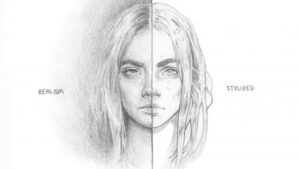
Aboriginal art symbols are undeniably beautiful. But they are not always easy for outsiders to understand as this visual language constantly changes depending on the artist, the context of the story and where the work originates. With Aboriginal art growing massively in popularity over the last couple of decades, recognising how these symbols evolve is essential to fully appreciate the art.
Whether you’re interested in a historical work or something produced by a leading contemporary Aboriginal artist, taking an interest in these symbols helps everyone better understand the art and the culture around them. Here, we delve a little deeper into how common Aboriginal art symbols, styles and colours can dramatically alter the meaning behind each different artwork.
Common Symbols and Their Usual Meanings
Considering there are Aboriginal artworks estimated at over 30,000 years old, it’s not hard to imagine how certain symbols have been used in differing ways by different artists through the generations. However, some common symbols have mostly retained their meaning and can be recognised across the work of numerous artists and art styles.
For instance, boomerang shapes are typically associated with stories involving hunting and bravery, while straight lines are frequently used to depict everything from spears and digging sticks to animal tracks, depending on the context. Another frequently seen motif is concentric circles, which are often used to refer to campsites, waterholes or other locations where groups of people gather.
How Aboriginal Art Symbols Change
It’s important to appreciate that Aboriginal Australians were made up of about 500 different clan groups or nations, with many having their own culture, language and beliefs that heavily impacted their artwork. This means that while many artworks appear to have similar symbols to the untrained eye, these creations can have vastly different meanings depending on where they were created.
These symbols continue to have incredible significance as they are used within artworks to communicate certain cultural traditions. Throughout history, Aboriginal communities have used these symbols to pass along information instead of a written language. These days, community elders remain central to how people interpret the stories told through these ancient designs. In fact, many Aboriginal art symbols can only be understood with the help of an elder, while others may not be reproduced by outsiders or used at all in certain circumstances.
Aboriginal Art Symbols in Contemporary Art
Although the origins of these symbols date back thousands of years, they continue to have incredible importance within Aboriginal communities. With this in mind, many of the community’s leading contemporary artists continue to use these symbols within their art to great effect.
From the incredibly vibrant artwork of Emily Kame Kngwarreye to Barbara Weir’s large-scale creations, there’s no shortage of world-class examples to admire that have used Aboriginal art symbols in fascinating ways. By drawing attention to their cultural heritage and linking their modern works to ancient stories, present-day artworks are often just as impressive as those dating from hundreds or thousands of years ago.

